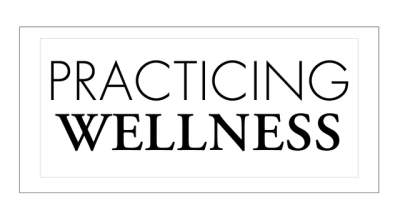
“This isn’t my first placement.”
It’s a statement I heard all too frequently while working as a therapist in a residential facility, and one I’ve been able to utter myself. My career in mental health began when I accepted a bachelor’s level position as direct care staff at a now-defunct residential facility. The campus was half-empty and dilapidated, and the only new referrals coming in were young men whom other residential facilities refused to admit. Most students were repeat offenders, and nearly all had some form of abuse or neglect in their history.
Between the complexity of the cases and the condition of the campus, I was miserable. Incredibly, some of the young men placed there were not miserable and, in fact, were downright comfortable with their living situations. The explanation for this is morbid, but undeniable — by providing food, clothing, shelter, and removing them from their environment, the campus created the safest place some of them had ever experienced. Unfortunately, those conditions also removed much of their motivation to make behavioral changes. Whereas I channeled my discomfort into changing my situation by way of graduate school, the young men most comfortable at the facility had no incentive to change anything.
Journalist Sydney Harris famously quipped, “Our dilemma is that we hate change and love it at the same time — what we really want is for things to remain the same but get better.”1 Unfortunately, even the most radical optimist among us would admit that no such miracle solution exists. Logically, we know that progress is the result of time and effort. Even so, excising bad habits from our lives can feel like a daunting process. By viewing macroevolutionary principles through a micro lens, we see why this is the case: periods of little or no change are the result of prior successful changes.2 The adjustments you’ve made in the past all had a function — to stabilize yourself. Any further conscious attempts to make changes are viewed by your body as disruptive.3 Essentially, our bodies and minds are programmed to find what works, then repeat it until it doesn’t — which is how that bad habit started in the first place. Your vice might be procrastination, shopping, sugar, or even the refusal to set clear boundaries. To paraphrase Sigmund Freud, all behavior has meaning, so at some point that habit met a need and making a mindful effort to stop meeting that need in the way you’re used to is uncomfortable.4
Hopefully, by now you’re thinking about the thing you’ve been trying to change lately. Adults, with the advantage of being free from raging teenage hormones, are very good at identifying problems but not much better than teenagers when it comes to fixing them. Chances are, you came to the conclusion that it was time to mix things up following some consternation about the way things are now. We know making changes to benefit our health will lead to a wellness windfall, and yet we don’t follow through. Inevitably, there comes a moment where the nagging subconscious refrain of “The old way was better!” is so overwhelming that you start to believe it.
Here are some tips for managing your distress when you feel yourself reaching that point:
1) Stop to identify (but don’t try to change) the emotion you’re feeling. Anger, fear, sadness, and disgust all served an evolutionary purpose, too, and fighting them will just double the misery. Recognizing the first sign of trouble is essential. After all, you can’t avoid a storm without looking at the sky.
2) Accept that you’re uncomfortable or, as they say in the military, “Embrace the suck.” I can say with 100% certainty that the stress you’re feeling won’t be permanent.
3) Engage your five senses to distract from the discomfort. Be mindful about how often you choose to engage your sense of taste, but feel free to put on your favorite Adele song and give your puppy a good belly rub.
4) T.I.P.P. the scales back in your favor, a break-glass-in-case-of-emergency distress tolerance acronym.4 “T” stands for temperature, and by putting an ice pack or two on your face or submerging your face in a bowl of ice water, you can trigger your mammalian dive. Your heart rate will begin to slow and blood will be redirected to your heart and brain, which helps to regulate emotions.5 “I” stands for intense exercise, which releases endorphins. The first “P” stands for paced breathing, and the second “P” represents paired muscle relaxation. Start at your calves, and tense one muscle group at a time as you inhale and relax the muscle group as you exhale, progressively moving north until you feel your distress start to subside.6
5) Beware the extinction burst — as the old habit begins to die or the new habit becomes stronger, you may have the urge for one last transgression (which is never “just one last time”).7 Your brain is checking to see if engaging in the old behavior more intensely will solve the problem.
Incorporating a positive new habit or stopping a destructive one can feel like a monumental effort. Listening to your discomfort to start the change process and then managing it during the process can be absolutely grueling. If the stressors or barriers to making positive change are too overwhelming, reach out to the State Bar of Michigan Lawyers and Judges Assistance Program to find out which resources are available to you.